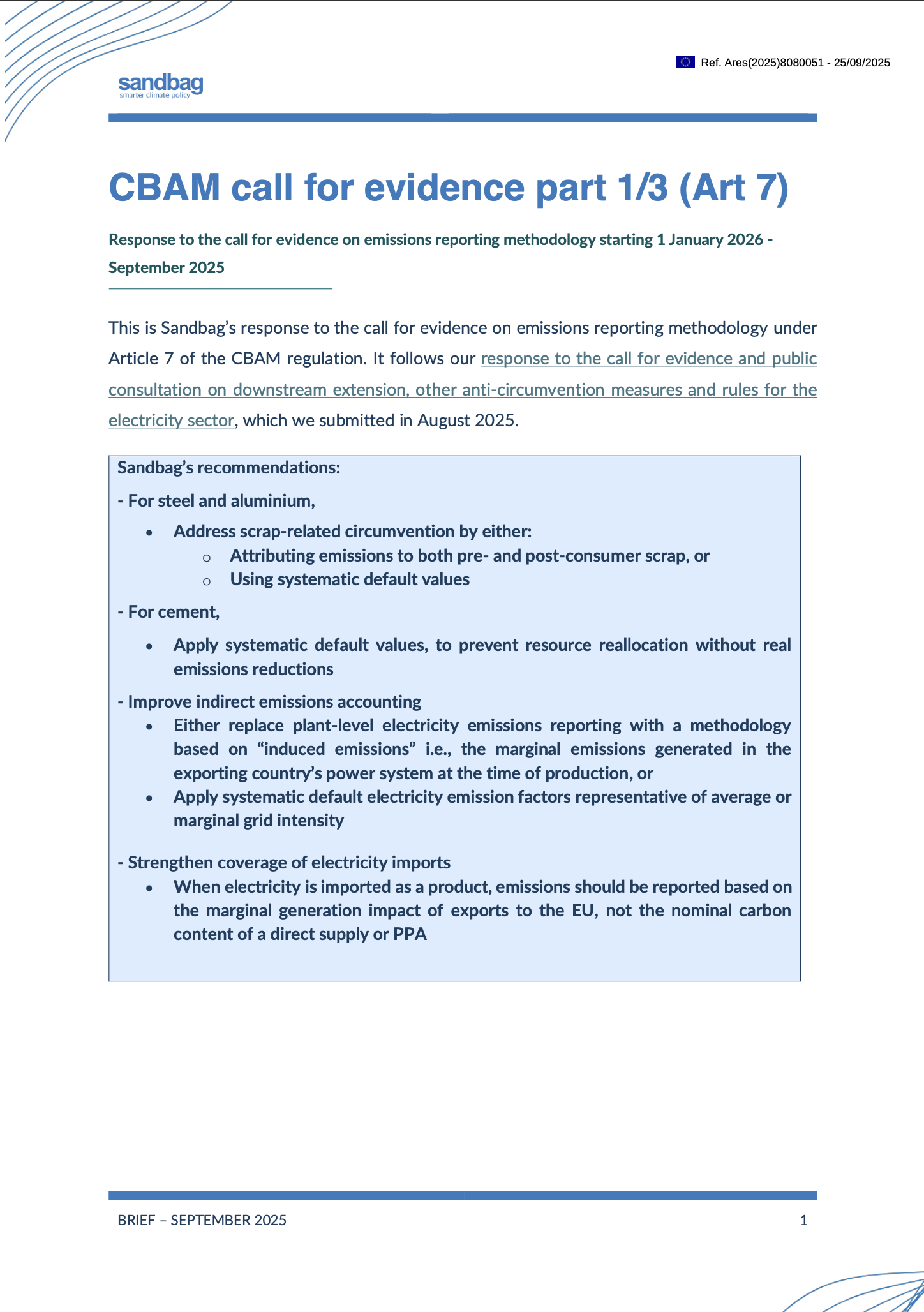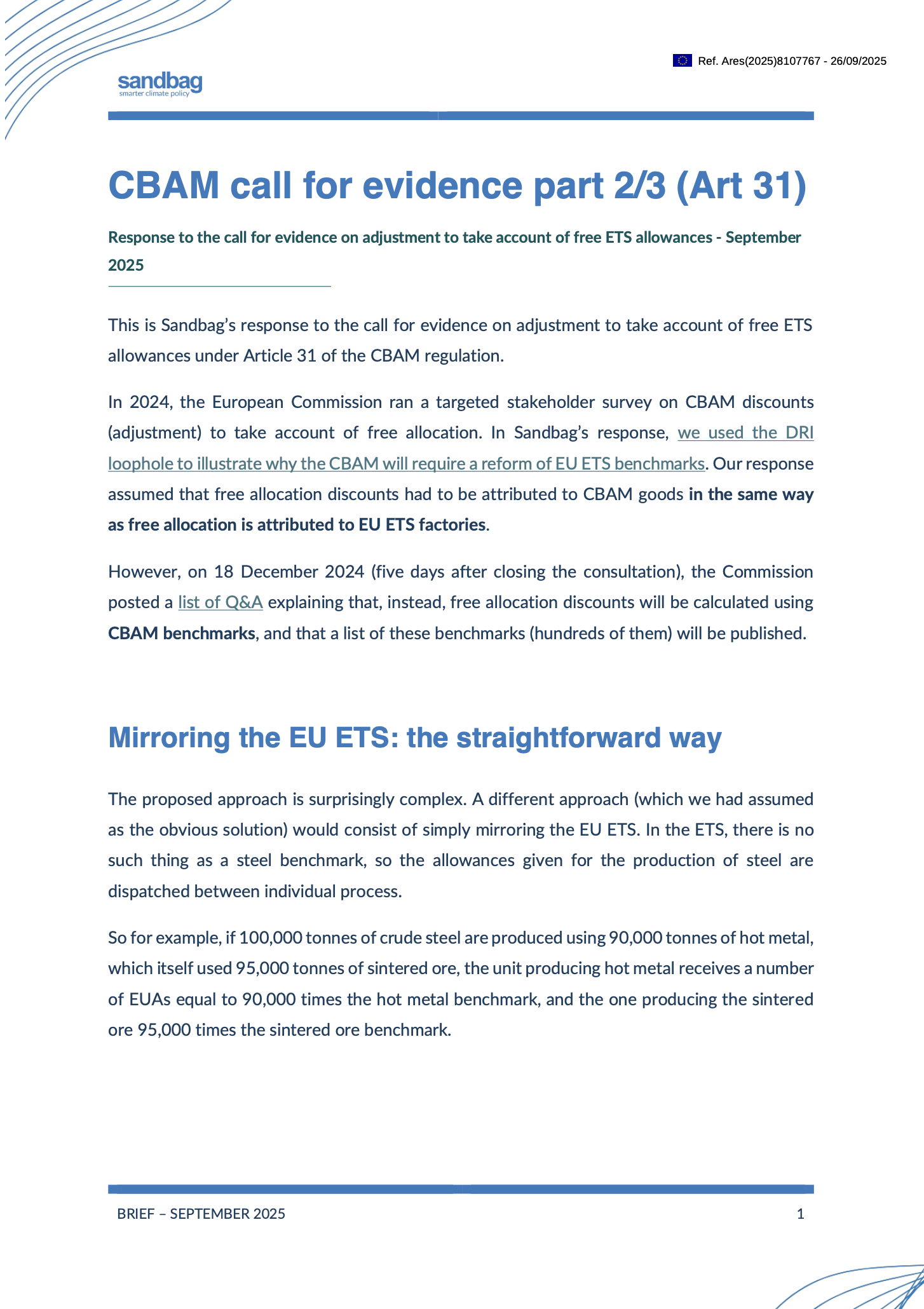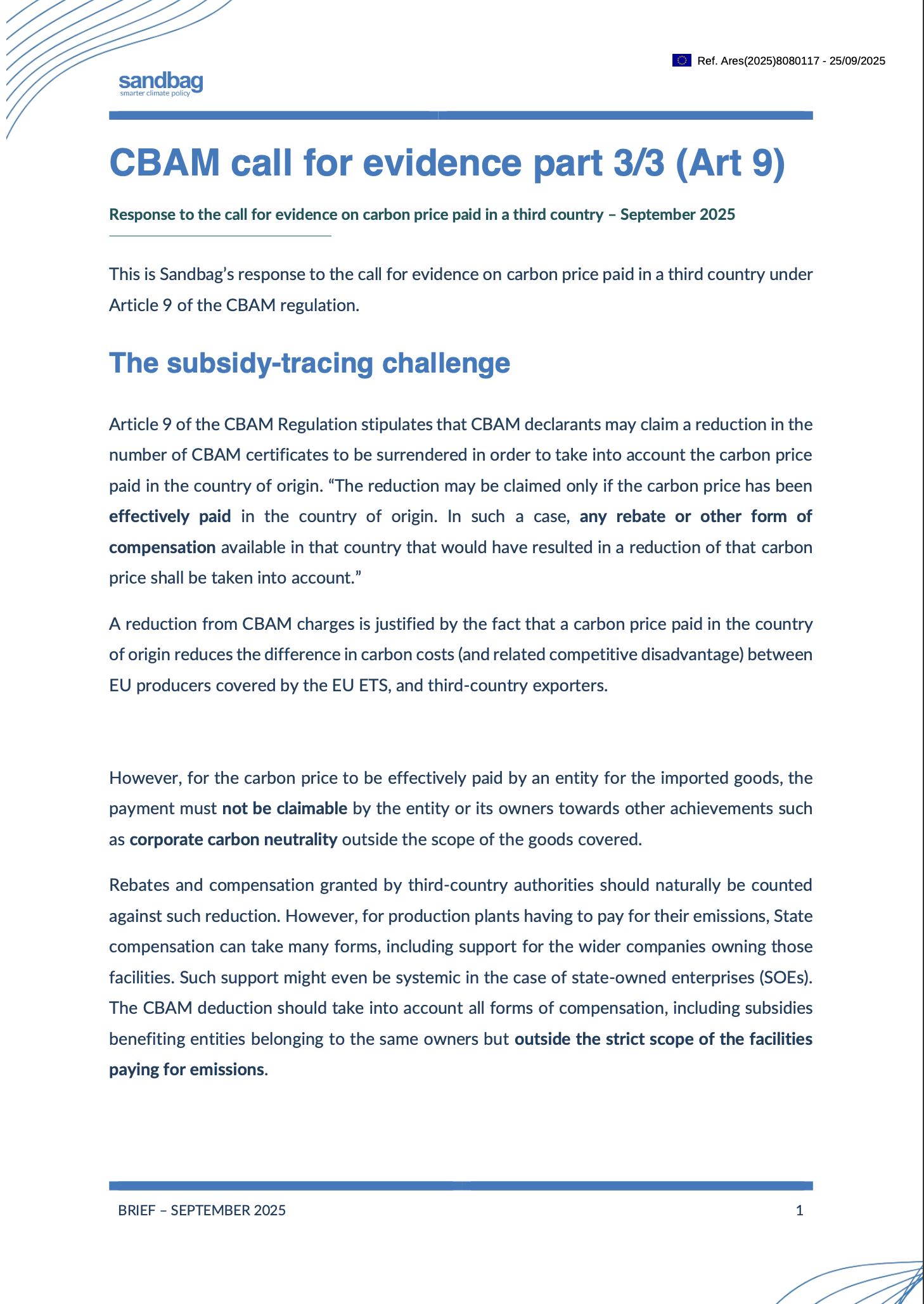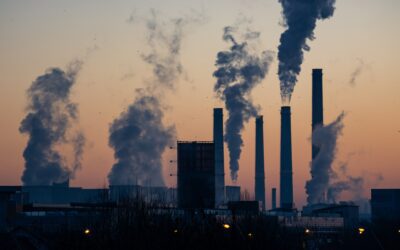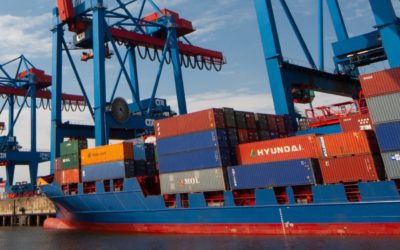The EU’s Carbon Border Adjustment Mechanism (CBAM) aims to ensure that imported goods face the same carbon costs as those produced in Europe.
As CBAM enters its next phase, the European Commission asked for input on three areas:
- Article 7 – Emissions reporting
- Article 31 – Adjustment to take account of free allocation
- Article 9 – Carbon prices paid in third countries
Sandbag responded to each consultation, highlighting risks that could weaken CBAM’s impact and offering practical solutions.
Our main recommendations
- Article 7 (Emissions reporting): Avoid resource shuffling by using induced emissions and systematic default values for steel, aluminium, cement, and electricity imports.
- Article 31 (adjustment for Free allocation): Move to product-based free allocation, ensuring equal treatment between EU and imported goods.
- Article 9 (Carbon price paid abroad): Ensure deductions only apply where carbon prices are paid for the production of goods, taking into account all support received by the production plant even not for carbon.
Related publications
Urgent: CBAM needed to abolish free allocation under the EU ETS
Why was the CBAM proposed in the first place? In July 2021, the EU announced its Fit for 55...
A storm in a teacup: impacts and geopolitical risks of the European Carbon Border Adjustment Mechanism
Report | A storm in a teacup Impacts and geopolitical risks of the European Carbon Border...
New study shows limited trade impacts of European Carbon Border Adjustment Mechanism
The impact of the likely Carbon Border Adjustment Mechanism (CBAM) on European importers will be...

